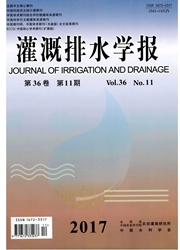

 中文摘要:
中文摘要:
为揭示土壤涵养水源的机制,并为山区生态治理提供依据,以三峡库首大老岭和夷陵山地为研究区,采集温性阔叶林棕壤、针阔混交林黄棕壤、茶园地和暖性针叶林黄壤的原状土样,通过离心法分析并拟合了山地土壤的水分特征曲线。结果表明,三峡山地土壤随吸力增大,土壤含水率呈先迅速降低后趋于平缓的变化规律。黄壤的持水性较差,黄棕壤相对于其他林地土壤有着更强的持水性。茶园持水能力比棕壤和黄棕壤差,与黄壤差异较小。孔隙分布随土壤剖面深度的增加而减少。大孔隙以黄壤体积比最大,其次是黄棕壤和棕壤,茶园最小。用van Genuchten模型拟合山地土壤的水分特征曲线,决定系数R2均大于0.95,模型可靠性高。van Genuchten模型参数n与有机质(P〈0.05)和粉粒(P〈0.05)的相关性较高,参数α与理化性质相关性较差。
 英文摘要:
英文摘要:
To unravel the mechanism of water holding capacity of soils and improve ecological system management in mountainous areas, we measured the water release curve of intact soil samples taken from Dalaoling and Yiling Mountainsin the Three Gorges of the Yangtze River. The soils examined included subalpine brown soil in temperate deciduous broad-leaved forest, mid-mountain yellow brown soil in the mixed broadleaf-conifer forest, soil intea garden, and low-mountain yellow soil in the warm coniferous forest. The water retention curves were measured using the centrifugation method. The results showed that with the increase in matric potential, the water content decreased quickly first and then gradually flattened. The waterholding capacity of the yellow soil in the warm coniferous forest was the lowest, and the yellow brown soil in the mixed broadleaf-conifer forest relative had the highest water holding capacity compared with other two woodland soils. The tea garden soils hold less water than the woodland soils. Pore-size analysis revealed that the number of large pores decreased with soil depth. All water release curves can be fitted to the van Genuchtenmodel with R^2〉0.95. The parameter n in the model was related to soil organic matter and silt, while parameters a was weaklyrelated to physical and chemical propertied of the soils.
 同期刊论文项目
同期刊论文项目
 同项目期刊论文
同项目期刊论文
 期刊信息
期刊信息
